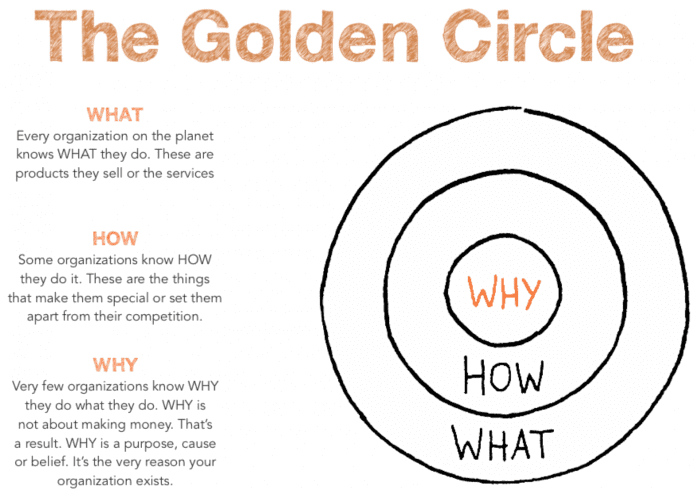All too often I come across government and public-sector organisations that focus all of their efforts on what they want to say and how they want to say it. But what they frequently overlook is the fundamental basis for all communication activities – the purpose, the rationale, the ‘WHY’.
All organisations, whether in the public or private sector, use some form of communication to engage with audiences. While the message and tactic will differ between these organisations, the purpose or the ‘WHY’ for communicating in the first place should always be clear.
Why? It’s simple. If you don’t know why you do what you do, or why you are implementing a certain program or policy, then how can you expect others to buy in?
Remember Simon Sinek?
While some will recall Simon as being the author of the New York Times bestselling book “Start with Why: How Great Leaders Inspire Everyone to Take Action”, he is arguably most well-known for his 2009 TED Talk, similarly titled “How Great Leaders Inspire Action”, which has clocked up almost 32 million views.
In it, Simon shared his own personal discovery; a simple yet profound idea that not only changed the way he viewed the word, but also how he operated in it. And it’s worth a revisit here today.
All hail, the Golden Circle.

As Simon describes it, the Golden Circle explains how some organisations and leaders inspire, and how others fail:
“Very few people or organisations know why they do what they do. And by ‘why’ I don’t mean to make a profit. That is a result. By ‘why’ I mean what’s your purpose? What’s your cause? What’s your belief? Why should anyone care? … As a result, the way we think, we act, the way we communicate is from the outside in … But inspired leaders and the inspired organisations all think, act and communicate from the inside out.”
If you know why your organisation exists, why you are implementing a specific policy or program, and why your audience and stakeholders should care, then you’re on the right path to success.
Simon backed up his Golden Circle idea with some pretty hard evidence – evidence of the neurological variety relating to the three major components of the human brain.
In a nutshell, the neocortex (our newest brain) corresponds to the ‘WHAT’ component of the Golden Circle. It is responsible for rational thought and language, whereas our limbic system is responsible for our feelings and emotions – the bullseye of the Golden Circle.
When an organisation utilises the Golden Circle and communicates from the inside out, focusing on why the audience should care, they talk directly to the part of the brain that controls all human behaviour. The onus is then on the individual to harness their reptilian brain and rationalise their feelings with the tangible things the organisation says and does.
And that’s it. That’s the secret to communication success and, likely, world domination; harnessing the power of the limbic system.
So, to all the organisations out there that are still focusing on the ‘WHAT’ and ‘HOW’, it’s high time to rethink your strategy. Clearly, it’s all about the ‘WHY’. Simon summed it up perfectly:
“People don’t buy what you do; they buy why you do it. If you talk about what you believe, you will attract those who believe what you believe.”
So, what do you believe, and why should your audience believe it too?

Thanks contentgroup – Simon Sinek is inspirational. Thoroughly recommended